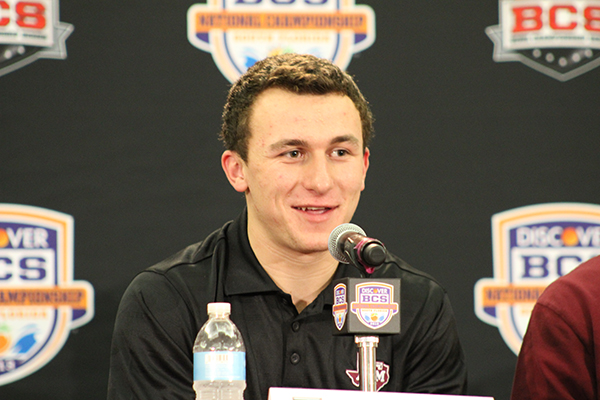
By Bryce Lawson
Just when you thought football was over until fall, a new league is doing better than expected.
Since there’s always a market for more football, the new Alliance of American Football started to play the week after the Super Bowl.
Unlike past professional leagues, like the U.S. Football League and World Football League, the AAF is not looking to compete with the NFL, but is working with it instead and even broadcasts games on the NFL Network.
In a way, the new AAF acts as a minor league, or farm system, for the NFL.
Many of the players in the AAF have past experience in the NFL and are looking for a chance to get back into the NFL before the draft in April. In its inaugural season, the AAF has eight teams, six of which are in non-NFL markets.
Right now, the biggest star in the league is Johnny Manziel, a troubled former first-round draft pick who signed with the Memphis Express.
After off-the-field issues ended his NFL career, Manziel decided to take his talents to Canada’s CFL, but poor performance and more off-the-field issues got him banned from the league.
This third chance at playing pro football might be Manziel’s final opportunity. But without a league like the AAF, players like Manziel would have nowhere to showcase their talents.
The league takes the approach of making its coaches the faces of the teams, with big names like Steve Spurrier, coach of the Orlando Apollos, and Mike Singletary, coach of the Memphis Express.
In an attempt to beef up the league’s star power — since, at the end of the day, it’s all about TV ratings — the league inquired about signing Tim Tebow, who declined the offer to continue his journey of making it to the big leagues with the New York Mets.
The AAF also reached out to Colin Kaepernick, even offering him a $20 million contract, which is a considerably higher offer than the league-standard three-year, $250,000 contract. Kaepernick declined the offer, feeling he could still start on an NFL team.
If Kaepernick were to sign, it would bring more legitimacy to the league, which is one thing it lacks. Yes, we all love football, but if we don’t know any of the players, who’s going to care?
The AAF needs to find a way to create new stars to keep fans invested, especially since these teams are brand new and don’t have a built-in history like fan favorite NFL teams do.
The level of play on the field is on par with the NFL, but with fewer penalties and harder hits, which help the league stand out from the more watered-down NFL.
One major difference that the league offers is the lack of special teams plays. In the AAF, a team must go for two after every touchdown.
With all that being said, is there really a need for more football? With Vince McMahon’s reboot of the XFL coming in 2020, which is attempting to compete with the NFL, the market might become oversaturated.
Is there room for three pro football leagues? As a football junkie, I say yes. As long as the AAF stays in its lane and doesn’t try to become “NFL-lite,” it should be able to grow and give fans their football fix until the April draft.


